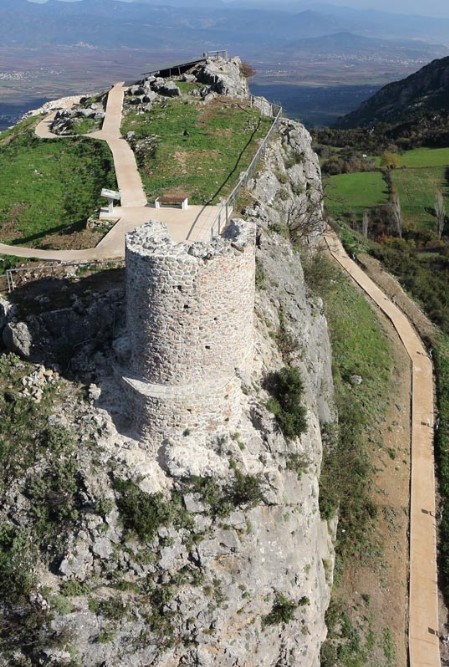
In 869, Hypati is mentioned in an ecclesiastical council for the first time under the name “Nea Patra,” together with Lamia, which was then called Zitouni. In 1393, it was captured by the Turks under Sultan Bayezid. During the period of Ottoman rule, it was called Patradziki (“Little Patra”) and served as the seat of a distinct province. Considerable remains of this powerful castle—strongly fortified also by nature—survive to this day. A distinctive feature is the ruin of a round tower, the dating of which is disputed; it is unknown whether it was built by Greeks, Franks, or Catalans.
In 1267, it was bequeathed to John Angelos Doukas Komnenos the Bastard, who re-fortified the Castle and made Hypati the seat of the principality of Great Vlachia, which extended as far as western Macedonia.
In 1275, the Castle of Hypati was attacked by John Palaiologos, a Byzantine general leading 30,000 men. Its strong fortifications prevented its capture by storm. John fled and called for help from the Frankish Duke of Athens, who arrived in Nea Patra with knights and broke the siege. The Castle remained under the rule of John’s descendants until 1318, when it passed into the hands of the Catalans, who formed the Duchy of Athens and Nea Patra.
In 1393, it was captured by the Turks under Sultan Bayezid. During the period of Ottoman rule, it was called Patradziki (“Little Patra”) and served as the seat of a distinct province. Considerable remains of this powerful castle—strongly fortified also by nature—survive to this day. A distinctive feature is the ruin of a round tower, the dating of which is disputed; it is unknown whether it was built by Greeks, Franks, or Catalans.Access directions: At the eastern entrance of Hypati, follow the rural road toward Agia Kyriaki, which is initially paved with concrete. After a short distance, turn right heading west.
Means of transport: Private vehicle (4×4) up to a certain point Parking: No designated parking available Operating period: No restrictions Supervising authority:** 24th Ephorate of Byzantine Antiquities
General information: 24th Ephorate of Prehistoric & Classical Antiquities 47 Othonos Street, Lamia 35100 or Byzantine Museum of Phthiotis – Hypati (Phthiotis Prefecture) Tel.: +30 22310-98079 Fax: +30 22310-98070
Area: Hypati Accessibility for persons with disabilities:No Cost: Free admission
Copyright © 2025. REX POLITI RENT ROOMS. All rights reserved.